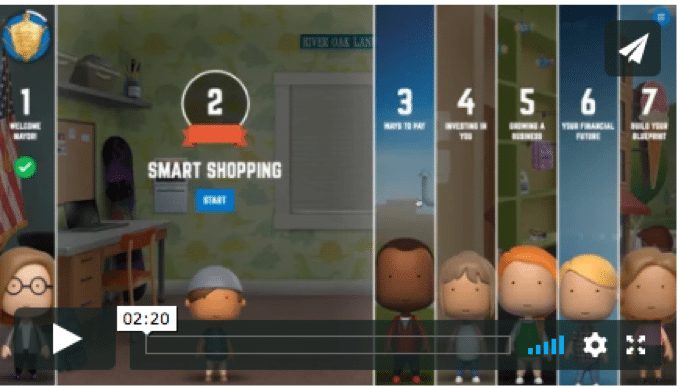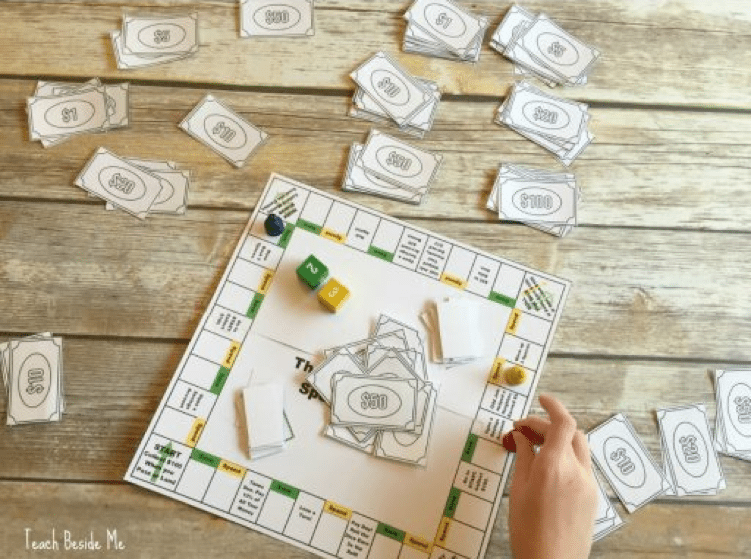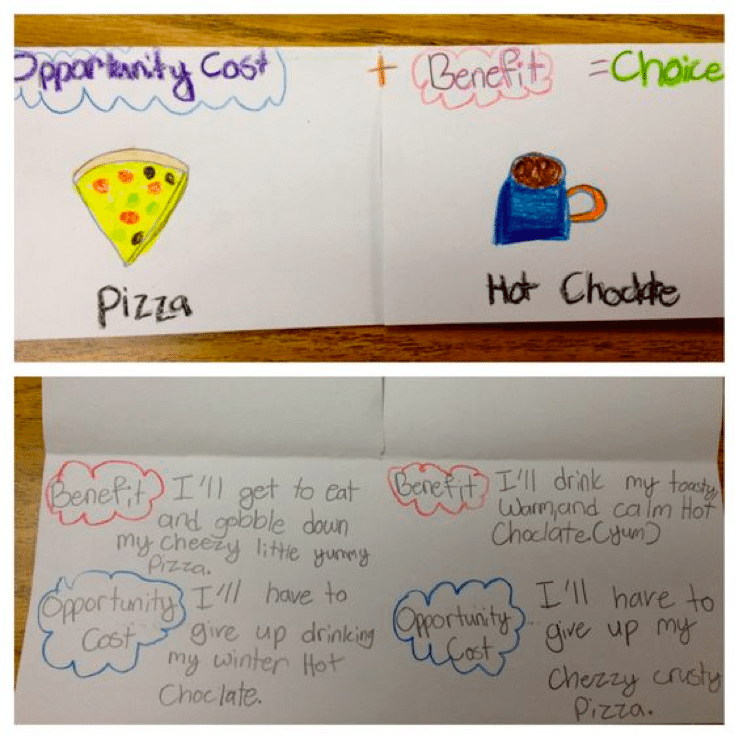The new year is the perfect time to take stock of your life—personally, professionally, and financially—and set goals for the future. Why not help your students do the same?
According to the Council for Economic Education, nearly 25 percent of Millennials spend more than they earn; 67 percent of Gen Y have less than 3 months’ worth of emergency funds; and more than 1 in 6 students in the U.S. do not reach the baseline level of proficiency in financial literacy.
These alarming statistics highlight the fact that teaching financial literacy has never been more important for our students. The sooner our students are exposed to financial knowledge and practice, the more likely they are to build healthy financial habits. Use the new year to help students learn financial skills with these activities and resources for students from kindergarten through high school.
1. Clarify the difference between needs and wants.
Sometimes it is hard for kids to differentiate between things they want and things they need. Start a class discussion about what distinguishes needs from wants. On the whiteboard, draw a large T-chart labeled with the terms needs and wants. Give students a few minutes to think of three things they would consider wants and three things they would consider needs. Ask for volunteers to share with the class one of the items on their list. Let students debate where the item should be added on the T-chart. Disagreements may arise, but that’s okay. Most of us have different definitions of needs and wants.
A fun way to give your students practice discriminating between needs and wants is Vault – Understanding Money. This fun, interactive online resource for kids in grades 4–6 provides students with a deeper understanding of the concept, along with a wide range of other topics.

SOURCE EVERFI
2. Define what makes you happy.
Ask your students what is most important to them. Do they like going to events with people? Is there something they’re passionate about collecting? Do they crave cozy spaces?
Have them create a heart map by drawing the outline of a heart on a large piece of construction paper and dividing the heart into sections. In each section, have students label and illustrate something that is important to their happiness.
Next, help students make the connection between their heart maps and finances. People usually spend their money on the things that are truly important to them. What in their heart map requires money? What doesn’t?
3. Get a clear picture of how much things really cost.
It’s hard to set financial goals when you don’t know the true cost of items.
Create a slideshow of images showing the items people typically spend money on. Include items such as household goods (e.g. toilet paper, laundry detergent, garbage bags); groceries; activities (e.g. going to the movies, eating out, attending a ball game); consumer goods (e.g. clothes, video games, cars); and services (cell service, cable T.V., dentist visit). As you present each image, ask students to estimate what each item costs. Then pass out a sales flyer that shows the prices of these items. Have students evaluate how realistic their guesses were.

4. Practice making decisions.
Every day we all make hundreds of decisions. When it comes to finances, how do you know when you’re making the best ones? After the holidays is a great time to help kids start thinking about this. If your students received money over the holiday, what will they do? Spend it all at once? Save it all? Spend a little and save a little?
Give students the opportunity to do a little role-playing. FutureSmart is an online resource for students in grades 6–8 that lets kids take on the role of a town mayor who is challenged with helping local citizens make financial decisions.

SOURCE EVERFI FutureSmart
5. Understand opportunity cost.
Making decisions about money can have consequences. Unless you have an unlimited pool of resources, the money you spend on one thing means there is less to spend on another. For example, if you want to spend your money going to the movies, you may not have enough remaining to buy the shoes you want.
Have students create an opportunity cost flip book. Present sets of choices and have students list the benefits and costs of choosing each item. Choices can be adapted for different ages. For example, younger kids could choose between two snacks or two toys while older kids could choose between buying a car or saving for college or playing a sport or having an after school job.
Understanding that every choice comes with costs and benefits helps students set financial goals.
6. Set savings goals.
Understand the difference between short-term and long-term goals. Do you want to save for something big? Donate to a cause? Have a savings account? Play games, like Monopoly, The Game of Life, or The Money Game, that help students practice making spending and savings decisions.

SOURCE The Money Game
7. Create a budget.
Help students understand that a budget is a plan you make to ensure that you have enough money for the things you want and need. Teach students to keep track of how much money they have coming in, how money is going out, and how much they need to set aside for future goals. Give them plenty of practice organizing their money in this way. The earlier students develop the habit of conscious money management, the better.

SOURCE KidsMoneyLessons.com
8. Brainstorm sources of income.
Maybe your students earn money working a part-time job, or maybe they get an allowance for working around the house. It’s a simple fact of life that if you want to spend more you need to earn more. Have students brainstorm a list of ways they could earn money. If they’re not old enough to get a job, maybe they could walk dogs, or babysit, or help a neighbor clean out their garage. Have students calculate how much money they could make if they worked for a set number of hours and earned a particular wage.
9. Use literature to explore the topic.
Read stories about characters who find creative ways to earn money. For younger students, read Arthur’s Pet Business by Marc Brown or The Berenstain Bears’ Trouble with Money by Stan and Jan Berenstain. For middle-grade students, try The Lemonade War by Jacqueline Davies, Lunch Money by Andrew Clements, or Lawn Boy by Gary Paulsen. For teens, check out The Year Money Grew on Trees by Aaron Hawkins or Windfall by Jennifer E. Smith.

10. Personalized practice for older students.
Give high school students the opportunity to tackle timely, real-world concepts such as borrowing and credit, investing, taxes and insurance, and protecting their consumer identity. EVERFI – Financial Literacy is an engaging, interactive learning experience for teens to take their understanding of finances to the next level, and it gets great reviews from teachers across subject areas.

SOURCE EVERFI
How do you teach your students to set financial goals? Please share your ideas in the comments.



